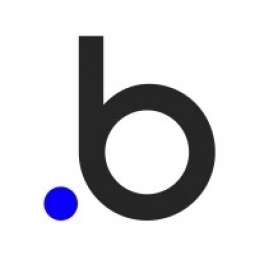Technology Category
- Automation & Control - Human Machine Interface (HMI)
- Infrastructure as a Service (IaaS) - Cloud Computing
Applicable Industries
- Buildings
- Cement
Applicable Functions
- Human Resources
Use Cases
- Building Automation & Control
- Construction Management
Services
- Cloud Planning, Design & Implementation Services
About The Customer
Co-planning is designed for office managers, supervisors, and anyone else responsible for assigning work shifts to employees. It is particularly useful in the context of remote work, which has become increasingly prevalent due to the COVID-19 pandemic. The app is ideal for those managing larger teams, where manual scheduling can become complex and time-consuming. Co-planning is also entirely free, making it accessible to everyone, including restaurant managers, chief physicians, and others who need to manage staff schedules during the pandemic.
The Challenge
Boramy Gau, the founder of Co-planning, faced a significant challenge when he decided to create an online scheduling app for supervisors to assign work shifts to their employees. Despite having an extensive background in finance and project management, Gau lacked coding skills. This lack of technical knowledge posed a significant barrier to the development of his idea. Furthermore, the need for such an application was heightened by the COVID-19 pandemic, which necessitated remote work and flexible scheduling. The challenge was to create an easy-to-use, efficient, and free scheduling tool that could handle multiple shifts, constraints, and staffing requirements.
The Solution
Gau discovered no-code platforms like Bubble, which allowed him to build his idea into a fully functional application without needing to learn how to code. Co-planning is an online scheduling app that generates optimal employee schedules based on various constraints and staffing requirements. Users simply register, create a project, add employees, define staffing requirements, set constraints, and click 'Get result'. The app's algorithm then generates the most efficient planning among employees to fit the user's needs. The Co-planning interface is highly simplified, and the app runs on a secret Python solving algorithm on a cloud server. The interface built with Bubble calls the solving script, making the process seamless for the user.
Operational Impact
Quantitative Benefit

Case Study missing?
Start adding your own!
Register with your work email and create a new case study profile for your business.
Related Case Studies.

Case Study
Energy Saving & Power Monitoring System
Recently a university in Taiwan was experiencing dramatic power usage increases due to its growing number of campus buildings and students. Aiming to analyze their power consumption and increase their power efficiency across 52 buildings, the university wanted to build a power management system utilizing web-based hardware and software. With these goals in mind, they contacted Advantech to help them develop their system and provide them with the means to save energy in the years to come.

Case Study
System 800xA at Indian Cement Plants
Chettinad Cement recognized that further efficiencies could be achieved in its cement manufacturing process. It looked to investing in comprehensive operational and control technologies to manage and derive productivity and energy efficiency gains from the assets on Line 2, their second plant in India.

Case Study
Intelligent Building Automation System and Energy Saving Solution
One of the most difficult problems facing the world is conserving energy in buildings. However, it is not easy to have a cost-effective solution to reduce energy usage in a building. One solution for saving energy is to implement an intelligent building automation system (BAS) which can be controlled according to its schedule. In Indonesia a large university with a five floor building and 22 classrooms wanted to save the amount of energy being used.

Case Study
Powering Smart Home Automation solutions with IoT for Energy conservation
Many industry leaders that offer Smart Energy Management products & solutions face challenges including:How to build a scalable platform that can automatically scale-up to on-board ‘n’ number of Smart home devicesData security, solution availability, and reliability are the other critical factors to deal withHow to create a robust common IoT platform that handles any kind of smart devicesHow to enable data management capabilities that would help in intelligent decision-making

Case Study
Commercial Building Automation Boosts Energy Efficiency
One of the challenges to building automation is the multitude of non-interoperable communications protocols that have evolved over the years. Buildings have several islands of automation. Bridging the islands of different automation without losing the considerable investment in each specialized control network is the main focus in this solution.




